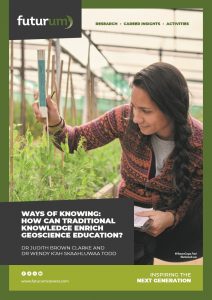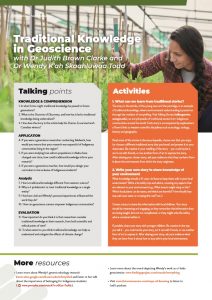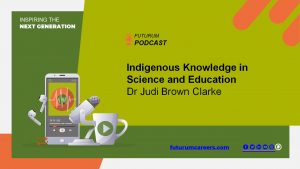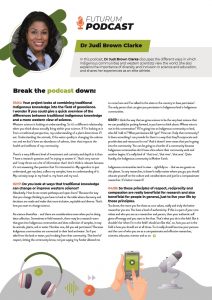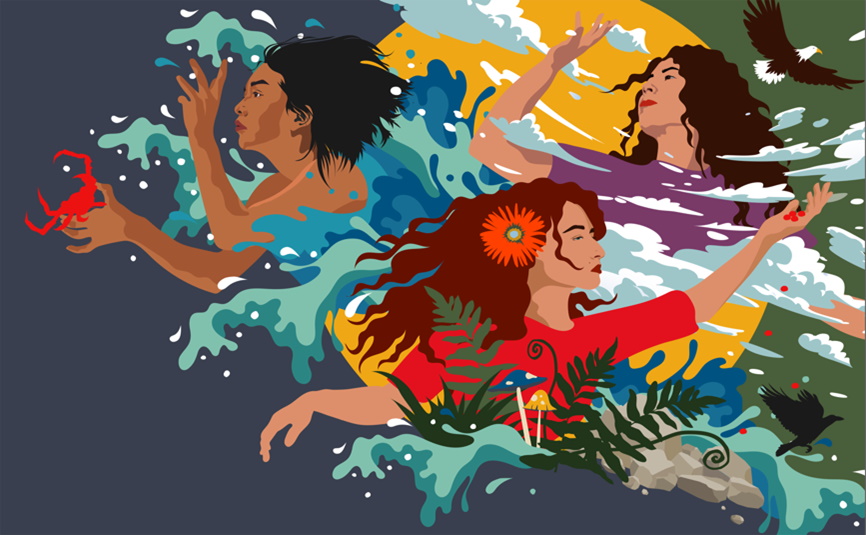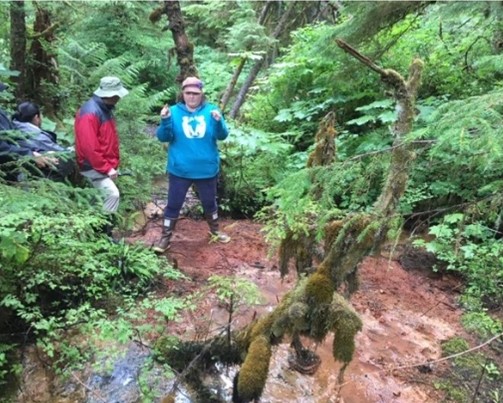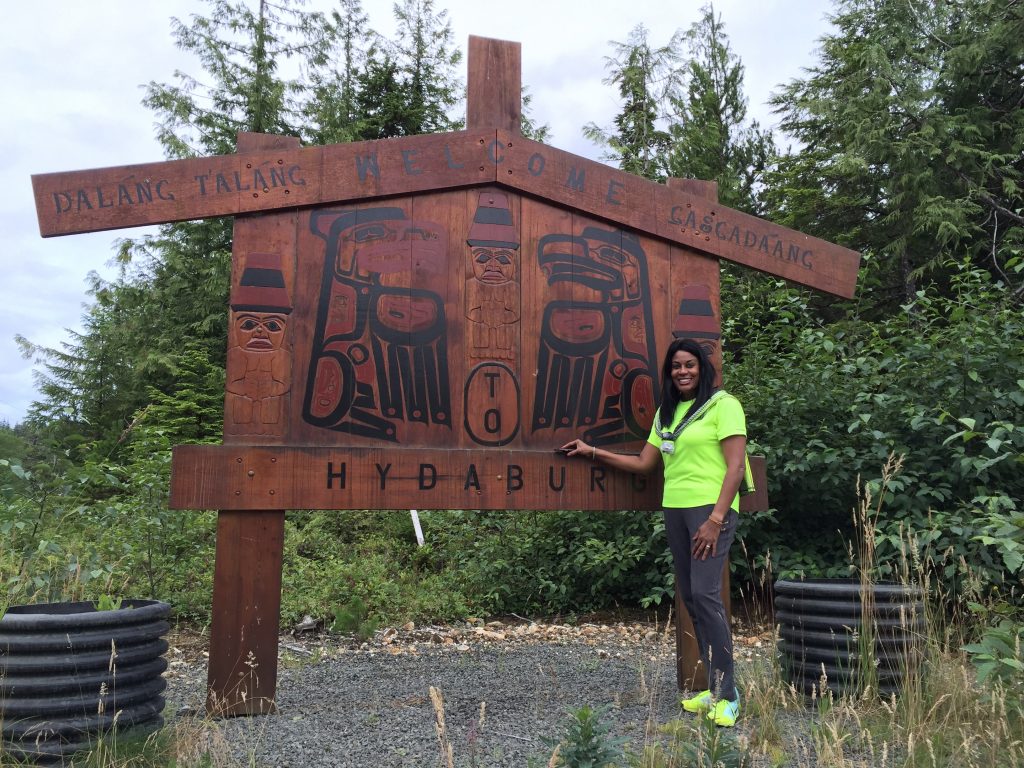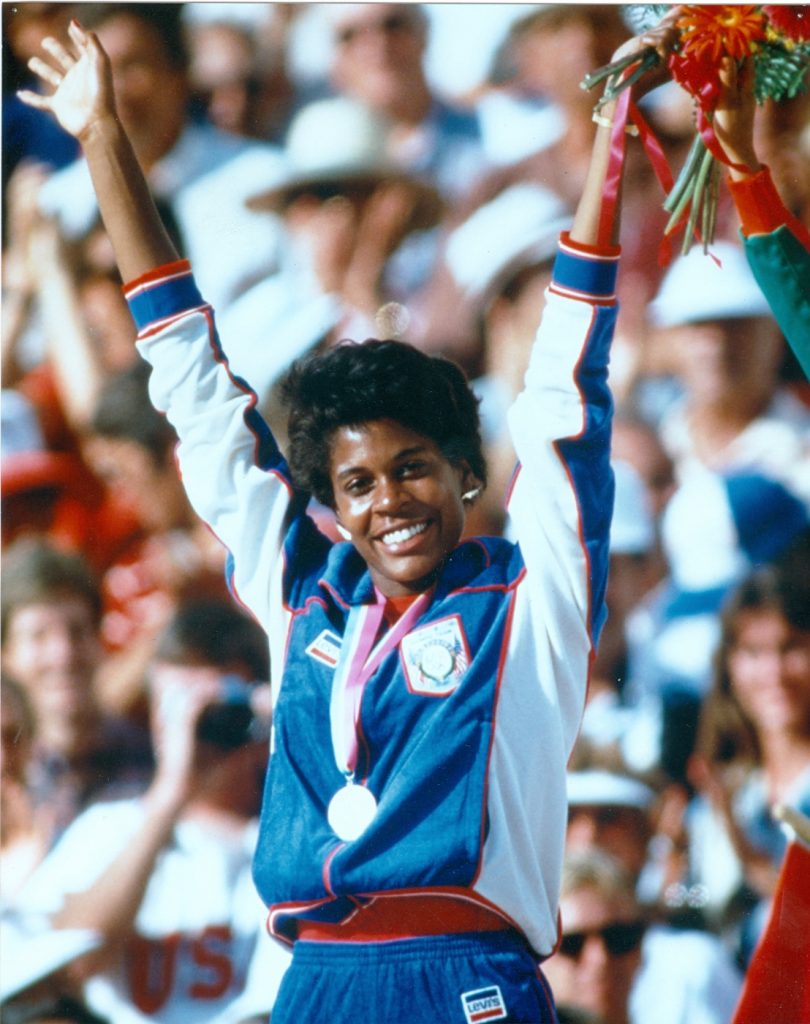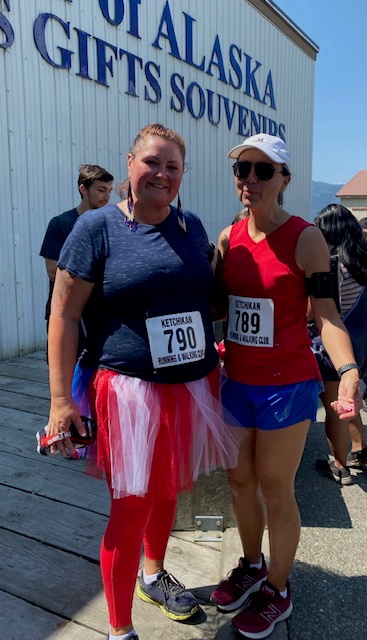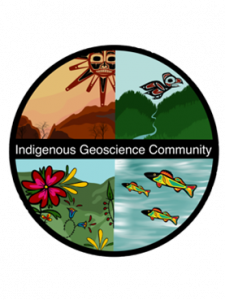Ways of knowing: how can traditional knowledge enrich geoscience education?
Indigenous communities have inhabited their lands for tens of thousands of years and developed unique connections with their environments, which are passed down through stories containing a deep and intricate understanding of the world. However, western science often ignores this traditional knowledge, marginalising Indigenous scientists and discouraging Indigenous students from pursuing careers in STEM. Dr Judith Brown Clarke, from Stony Brook University, and Dr Wendy K’ah Skaahluwaa Todd, from the University of Minnesota Duluth, USA, hope to increase the participation and retention of Indigenous students in geoscience, by incorporating traditional knowledge in geoscience education and research.
Talk like a geoscientist
Indigenous community — a community native to a particular place that has inhabited a region for millennia
Reciprocity — the act of exchanging things with others, based on mutual benefit
Traditional knowledge — a body of observations, practices and beliefs passed down through generations over thousands of years. Traditional knowledge is developed using local knowledge embedded in cultural traditions. It may be shared through language, art, dance, music, names, medicines, stories and songs
STEM — an umbrella term used to group western science into distinct technical disciplines of science, technology, engineering and mathematics
Many years ago, a young man wandered alone through a frozen forest. He had been lazy, and was not prepared for the long, hard winter. One night, in a snowy clearing, he caught a partridge, cooked it on a fire and ate it, leaving only the feet, which he tossed into the snow.
A few days later, the young man had caught nothing more. He found himself back at the clearing and sat down to make a fire. As the snow melted, he found the discarded partridge feet and ate them hungrily. That night as he slept, a partridge came to him in a dream. “You were too proud to eat my feet as other people do, but now you want to have them,” it said. “You are at death’s door, but from now on you will be alright. Tomorrow night, you will have plenty to eat.”
The next day, the man sauntered around the forest, daydreaming about all the food he was sure to find. But, as night fell, he grew weary and his stomach remained empty. He felt cheated by the partridge who, he felt sure, had deceived him. Feeling deflated, he sat down by a snow drift and lit a fire for warmth. Soon, the smell of cooking fat rose into his nostrils. The fire was melting the snow that had been covering a moose, which had died in the autumn when it was fat. The man let the fire cook the moose, then ate until he fell into a contented slumber.
This story has been passed from generation to generation by the Dunne-Za, a group of First Nations People in Canada. For thousands of years, the Dunne-Za have used stories like this to teach their children. In the depths of a freezing winter, survival depends on an intimate knowledge of your environment: of knowing that partridges do not migrate or hibernate, that their feet are edible, that frozen carcasses may be safe to eat, and that moose are fattest in the autumn. These details can be the difference between life or death.
This story is an example of traditional knowledge. Indigenous communities all over the world have formed deep, reciprocal relationships with their lands over hundreds of generations and thousands of years. Each community has developed its own unique body of knowledge and its own systems for sharing it through stories, songs, paintings, sculptures and dances.
Dr Judith (Judi) Brown Clarke and Dr Wendy K’ah Skaahluwaa Todd want traditional knowledge to be used in geoscience education and research. The use of these two knowledge systems, traditional knowledge and western science, not only provides scientists with a deeper worldview, greater cultural appreciation and improved critical thinking skills, but also allows Indigenous students and researchers to maintain their identity as Native scientists.
How does traditional knowledge inform western science?
“Traditional knowledge is dynamic and varies between Indigenous communities,” says Wendy, a Haida geoscientist. Hundreds of Indigenous tribes live in the US alone, each with their own knowledge, culture and language. “The practice of combining the identities and experiences of individuals from distinct tribal communities into a single monolithic group, and treating traditional knowledge as a single entity, is harmful and neglectful,” she says.
Traditional knowledge is its own independent knowledge system, informed by local natural phenomena. Unlike western science, which tends to look at parts of a whole, like cells in an organism or animals in an ecosystem, traditional knowledge explores how all parts interact and impact the whole system.
For example, a geochemist might study the elemental composition of water in a river, a physical geographer might examine the river’s flow rate and an engineer might investigate the river’s likelihood of flooding. “Traditional knowledge of that river demonstrates how the water impacts the entire ecosystem,” explains Wendy. “The water impacts microbes, plants and animals, and the river’s interactions with ecosystems affect human health and the wider environment.”
Why is traditional knowledge undervalued by western science?
“Western science is steeped in institutional, structural and systemic bias, intolerance and racism,” explains Judi. “It is a product of the Doctrine of Discovery that was established 600 years ago.” The Doctrine of Discovery was the idea that European people and their belief systems were more sophisticated than those from other parts of the world. As a result, Europeans colonised other regions and replaced local beliefs and traditions with Christianity and western science.
As western science spread around the globe, it became the dominant mindset for viewing the world. To this day, schools of thought not rooted in western society are discredited as unscientific or rudimentary. “It becomes easy to dismiss what is unfamiliar, unknown and different,” says Judi, “especially when in a position of power.”
What are the problems with current geoscience teaching and research methods?
It is not uncommon for western researchers to ‘discover’ things about a place that local tribes have known for thousands of years. “Claiming these as new discoveries undermines Indigenous peoples and their knowledge systems,” says Judi. “Ignoring the ancestral and cultural contexts of each Indigenous community is disrespectful, unethical and theft of intellectual property, just as if a discovery from a research lab was taken and used without permission.”
As a discipline, geoscience relies heavily on fieldwork, which is commonly conducted on Indigenous lands by western researchers who fail to learn and acknowledge the history and sacredness of these places. Educational field trips are often not inclusive of Indigenous students, as they usually take place during the summer when students may have cultural responsibilities at home. Indigenous people are underrepresented in geoscience departments at all levels, from students to professors to administrators. This can leave Indigenous students feeling isolated, without role models to mentor and advocate for them through their journey to a career in geoscience.
How can geoscience become inclusive to Indigenous students and communities?
Geoscience researchers should learn the culture and history of the lands on which they work. “It is important for researchers to build long-term, meaningful relationships with Indigenous communities,” says Wendy. These relationships should be based on reciprocity, on giving and receiving, rather than one-sided transactions in which researchers take knowledge and resources from a field site but give nothing back to the community. “Fieldwork should be seen as an opportunity for cross-cultural knowledge exchange. It should address the needs of tribal communities as well as the researcher.”
‘Two-eyed seeing’, the coupling of traditional knowledge and western science, in education and research will sharpen the critical thinking skills of all students and researchers, leading to the development of scientists who are better-equipped to deal with the challenges facing our planet and societies.
Judi and Wendy are developing a culturally aligned STEM curriculum, to incorporate traditional knowledge into STEM teaching at all educational levels. Only when Indigenous knowledge is taught and treated with respect will Indigenous students feel seen, included and validated in scientific disciplines. Judi and Wendy have also established a mentorship programme, providing Indigenous students with role models to support them in their identity as Native scientists as they navigate western education systems.
“We hope Indigenous communities will take control of their education systems,” says Judi. “Our goal is that people become teachers in their own communities, incorporating their culture, language, stories and traditional knowledge, not only into geoscience lessons and the wider STEM curriculum, but into all aspects of teaching and learning.”
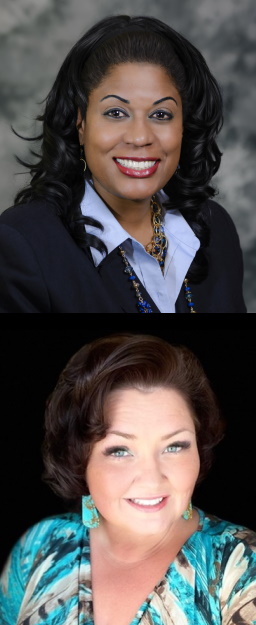 Dr Judith Brown Clarke
Dr Judith Brown Clarke
Vice President for Equity and Inclusion, Chief Diversity Officer, Stony Brook University, USA
Field of research: Inclusive Education
Dr Wendy K’ah Skaahluwaa Todd
Howard Highholt Endowed Professor, Department of American Indian Studies, Department of Earth and Environmental Sciences, University of Minnesota Duluth, USA
Fields of research: Traditional Knowledge in Geoscience, Microbial Diversity, Metal Chemistry
Research project: Increasing participation and retention of Indigenous students in geoscience education
Funder: This work was supported by the US National Science Foundation (NSF; #2022931) under the Division of Research, Innovation, Synergies, and Education (RISE)
Reference
https://doi.org/10.33424/FUTURUM406
About traditional knowledge in geoscience
Geoscience is the interdisciplinary study of the Earth. It covers all aspects of our planet, from rivers and oceans to rocks and minerals, from the tectonic forces that shape landscapes to the interactions of microbial communities in hot springs. As traditional knowledge shows us how all aspects of Earth are interrelated, it can teach us a lot about geoscience.
Teaching geoscience using Haida knowledge
Wendy and Judi have created educational modules for elementary and high schools in Hydaburg, a Haida community in Alaska, that teach STEM topics using traditional Haida stories. For example, the Haida Creation Story is the basis of a module on environmental science that examines water quality, anatomy, physiology and evolution. The Haida Frog Story was used to teach climate history by linking culture and dendrochronology (dating a tree by counting its rings). “When Hydaburg redid its totem poles, we used the old poles to teach dendrochronology,” says Wendy. “From these trees, students could construct a 500-year climate history of the region by studying the tree rings persevered in the totem poles.”
High school students also assessed the water quality in Hydaburg’s marina by lowering pieces of wood to different depths in the water column and leaving them for a year to see if they would be colonised by shipworms, a type of clam that burrows into wood and is very sensitive to pollution. Over five years, students discovered the surface water in the marina was polluted, as shipworms never colonised the higher-level pieces of wood. They collated the five years’ worth of data and gave it to the tribe in a report, which the tribe used as evidence to secure a grant to clean up the marina. The following year, shipworms colonised the wood at all levels in the water column, indicating the water quality had improved. “This was a great example of a project that enabled students to have a direct positive impact on their own community,” says Wendy. And, as Judi points out, “The community could see their students as critical thinkers who are contributing to environmental stewardship.”
How can geoscience careers empower Indigenous communities?
The Native lands of many Indigenous communities are rich in natural resources such as timber, oil, minerals and fish. Extractive industries, such as mining, forestry and fishing, commonly operate on Indigenous lands without consideration of local communities or ecosystems. As these industries are geoscience-based, training the next generation of Indigenous geoscientists is essential for preserving lands and resources. “It is vital that tribal members, who have a connection to the land and understand how to treat it with respect, act as caretakers to assess the use and extraction of resources in a responsible and culturally respectful manner,” says Wendy. By pursuing a career in geoscience, Indigenous students and researchers can empower their communities to advocate for greater protection of lands and ecosystems. “We also want to encourage students interested in geoscience to pursue non-scientific careers, in education, policy, law, consulting, journalism and advocacy,” says Judi. Geoscience and traditional knowledge show us that, as humans, we are a part of our environment, not separate from it.
Pathway from school to geoscience
• Studying geography, chemistry, biology, physics and mathematics at school, followed by geology, Earth science, geography or environmental science at university, will set you on a path to become a geoscientist. However, remember that while western science treats these disciplines as distinct fields, geoscience is a holistic way of looking at the world.
• Take courses that combine traditional knowledge with STEM education to gain a deeper view of the world and of how all aspects of geoscience are interrelated.
• Talk to community members, elders and Indigenous researchers to learn more about traditional knowledge and how it can be applied to the world around you.
• Popular science books can give you an insight into how traditional knowledge informs western science. Wendy and Judi recommend Braiding Sweetgrass, by Robin Wall Kimmerer, Research is Ceremony, by Shawn Wilson, Knowing Home, by Gloria Snively, and Native Science, by Gregory Cajete.
Explore careers in geoscience
• The American and Indigenous Science and Engineering Society (AISES) is a wonderful organisation that provides support for Indigenous students. Visit their website to explore their careers hub and educational resources: www.aises.org
• Wendy founded the Indigenous Geoscience Community, which is a great place to explore how traditional knowledge is used in geoscience: www.sites.google.com/d.umn.edu/wfsmythe/home/indigenous-geoscience-community
• The American Geophysical Union (www.agu.org) and the Geological Society of America (www.geosociety.org) both have sections dedicated to Indigenous knowledge and careers in geoscience.
Meet Judi
Growing up, my parents, teachers and athletic coaches were my role models. They instilled confidence, determination and resilience in me. As a minority and a girl, I experienced racism, bias and intolerance. But my role models taught me I could excel if I had integrity, courage and a good sense of humour. I have maintained these values throughout my life and am committed to ‘paying it forward’ to make a positive impact in the world.
As a teenager, I had an insatiable curiosity for culture and science, and I wanted to explore the world. However, my parents worked hard just to pay the bills, and I didn’t know anyone who travelled, so I watched the world on TV and dreamt instead. Fortunately, my ability to excel athletically allowed my dreams of travelling to become a reality. As an elite athlete, I had the opportunity to see and experience the world!
Competing in the 400 m hurdles for the US at the Olympics and Pan American Games was an absolute thrill and honour! I was so proud to represent my country and community. Winning a silver medal at the 1984 Olympics and gold medals at the Pan American Games was the culmination of many years of training. It was amazing to have my wildest dreams realised!
Culture provides an important sense of identity and community, as well as a shared history and traditions. It also serves as a way of pushing back against marginalisation and assimilation into dominant cultures that don’t represent you. It is an invaluable tool for preserving language, customs, beliefs and practices.
I believe my childhood experiences of racism and sexism, coupled with my competitiveness, insatiable thirst for knowledge and desire for fairness, have shaped my pathway in life. I chose to work in education because I want to encourage the next generation of strong leaders in education, science, medicine, humanities and sport.
I am proud to be a role model for the next generation because I can positively influence young people’s behaviours, attitudes and beliefs. I want to set an inspirational example by demonstrating qualities such as honesty, hard work, empathy and kindness. I hope this helps shape their worldview and instils positive values that they will carry throughout their life.
Judi’s top tips
1. Be resilient: Learn from your failures, develop a growth mindset, and never give up on your dreams.
2. Stay healthy: Eat well, exercise regularly, get enough sleep, and take care of your mental health.
3. Remember that success is a journey, not a destination: Keep working hard, stay focused, push yourself to reach new heights, and celebrate small successes.
Meet Wendy
My 6th grade science teacher, Mr Price, was my role model when I was younger. He fostered my interest in science, specifically marine science, as he had a marine fish tank in class and each week there would be a different and unusual animal in the tank.
I am the first generation of my community not forced to attend state boarding school. My mom attended boarding school, where she was forced to speak English and forbidden from speaking Haida. I am now reclaiming my culture and learning the Haida language.
It is important to know who you are and to own your indigeneity. Never let anyone take it away from you, or make you feel ashamed of your identity, culture or language. When you reclaim your language and culture, you are honouring the sacrifices of your ancestors.
My culture means everything to me! As I learn and reclaim more of my Haida culture, I learn more about my responsibility as a Haida woman. It keeps me grounded and guides me through this world and through this life. I have learnt to listen and allow myself to be guided on a journey of a lifetime.
Every time I experience racism and sexism, it makes me more determined to bring awareness of these negative behaviours and change the system for other diverse scholars. Having to stand my ground when using traditional knowledge or working with Indigenous communities in academia motivates me in my work.
As a Haida geoscientist studying the geochemistry of rivers and hot springs, I work with my tribal community and elders to gain knowledge about my research. As a university professor, I include traditional knowledge in the science courses I teach. I also mentor Haida high school and university students, and am always proud when they succeed. Our cultural responsibility requires that we guide and support our youth. All that we have is not really ours – it belongs to future generations.
Wendy’s top tips
1. Know that you are where you are supposed to be. You belong.
2. Trust that your path will reveal itself to you when you are ready.
3. Always remember that you are important and cherished.
Do you have a question for Judi or Wendy?
Write it in the comments box below and Judi or Wendy will get back to you. (Remember, researchers are very busy people, so you may have to wait a few days.)

